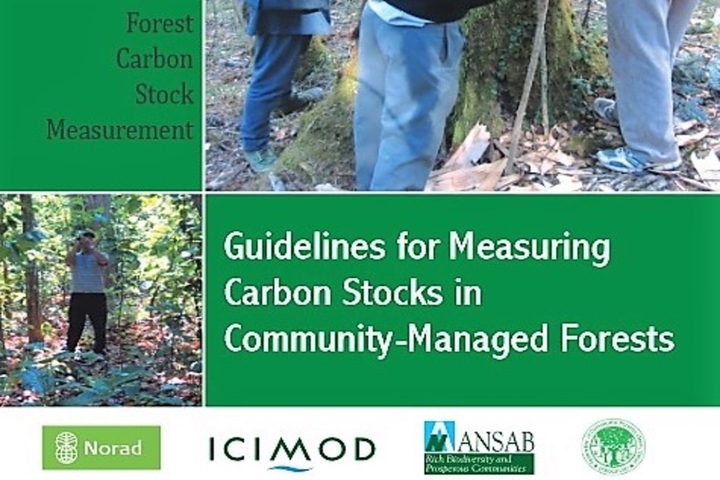Guidelines for Measuring Carbon Stocks in Community-Managed Forests
 Image credit: [ANSAB]
Image credit: [ANSAB]
Abstract
Reducing emissions from deforestation and forest degradation REDD has gained major attention in international climate negotiations. Evolving discussions on REDD have brought forests to the forefront of both climate change mitigation and adaptation. Among others, successful REDD programs require reliable, accurate, and cost effective methods for measurement and monitoring of forest carbon storage. Despite the involvement of several academic research and development organizations in Nepal, common, reliable, and user friendly forest carbon measurement methodologies are still lacking. Forest Carbon stock Measurement Guidelines for measuring carbon stocks in community managed forests was prepared by the technical team of Asia Network for Sustainable Agriculture and Bioresources ANSAB in consultation with the Project Management Unit ICIMOD, international and national experts, and key stakeholders. It is a product of the REDD pilot project Design and setting up of a governance and payment system for Community Forest Management of Nepal under Reducing Emissions from Deforestation and Forest Degradation, an initiative implemented by the Asia Network for Sustainable Agriculture and Bioresources ANSAB, International Centre for Integrated Mountain Development ICIMOD, and Federation of Community Forest Users, Nepal FECOFUN with financial support from the Norwegian Agency for Development Cooperation NORAD. The guidelines describe methods, procedures, and steps for measuring organic carbon stored by forest land use systems. They introduce globally accepted equipment, instruments, methodologies, procedures, and standards for forest carbon measurement and offer a detailed recipe for using them more efficiently and effectively. In other words, blended methods and procedures are presented coherently to make them applicable to a wide range of ecoregions and management regimes. The guidelines offer guidance on defining participatory boundaries with the help of remote sensing maps and tools, as well as a complete set of procedures on application of remote sensing, GIS, and ground inventory. They provide, in short, precise, accurate, reliable, and userfriendly methodologies for forest carbon measurement which are adapted to Nepal specificities.